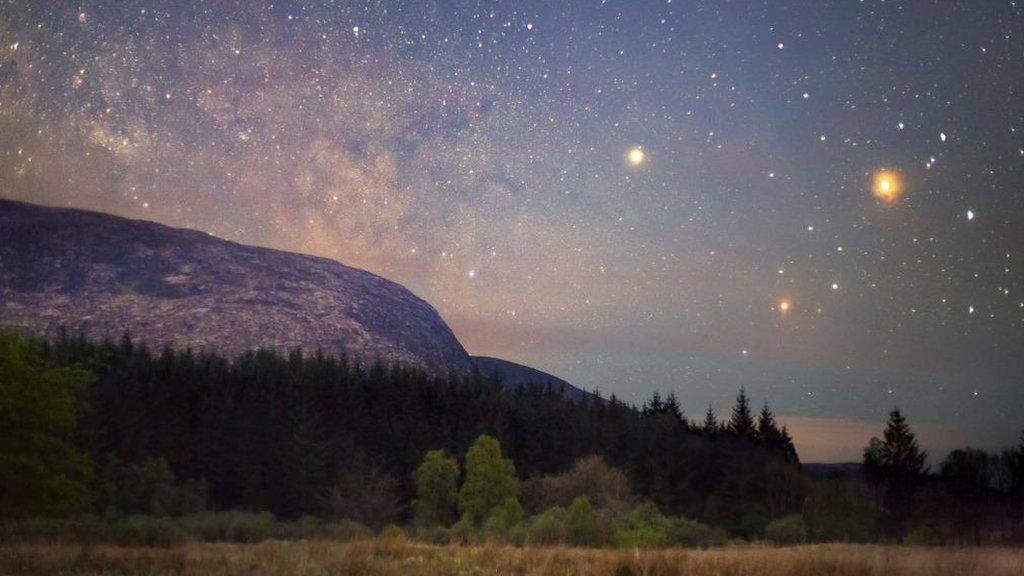A decade of the UK's first Dark Sky Park in Galloway
- Published
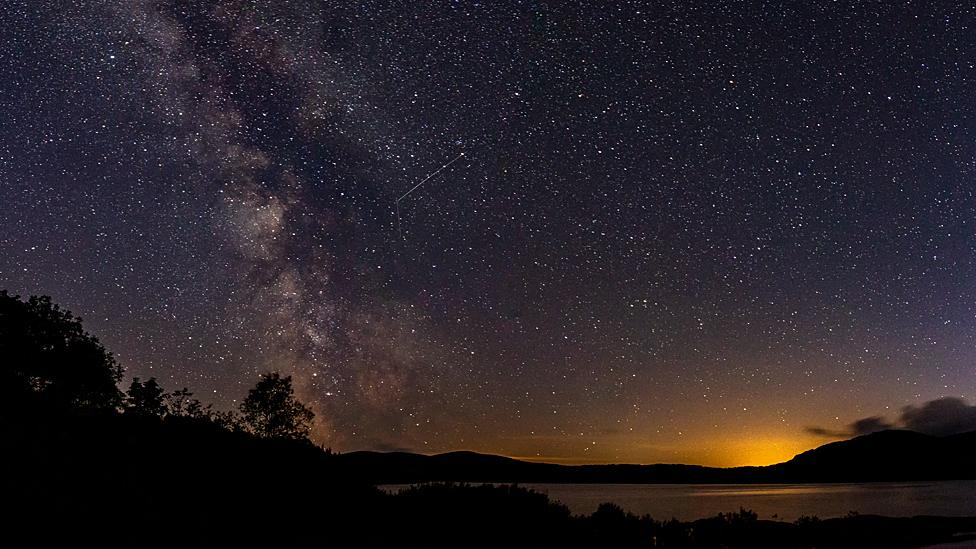
The Galloway Forest Park secured its dark sky status 10 years ago
There are few things which make you feel smaller than gazing at the night sky.
It was exactly a decade ago that a patch of south-west Scotland was recognised as one of the best places in the world to indulge in that pursuit.
The Galloway Forest Park was declared the UK's first Dark Sky Park on 16 November 2009.
But what exactly does that mean? And, over the intervening years, what difference - if any - has it made?
How did we get here?

The skies over the south of Scotland site were described as a "fantastic asset"

The International Dark-Sky Association (IDA) was set up more than 30 years ago and is "dedicated to protecting the night skies for present and future generations".
Its mission is to do that through "environmentally responsible outdoor lighting".
It recognises a range of places - communities, parks, reserves and sanctuaries - for the quality of their night skies.
They now total more than 100 but, back in 2009, the Dumfries and Galloway site was leading the way for the UK and was described as a "fantastic asset".
Part of the selection process involved using a meter to measure the darkness of the sky overhead.
The higher the rating, the greater the darkness, with a photographer's dark room rated 24.
In cities like Glasgow or Edinburgh a likely reading would be about 15 or 16 while Galloway Forest Park rated 23 - securing it a gold tier award.
Star attraction
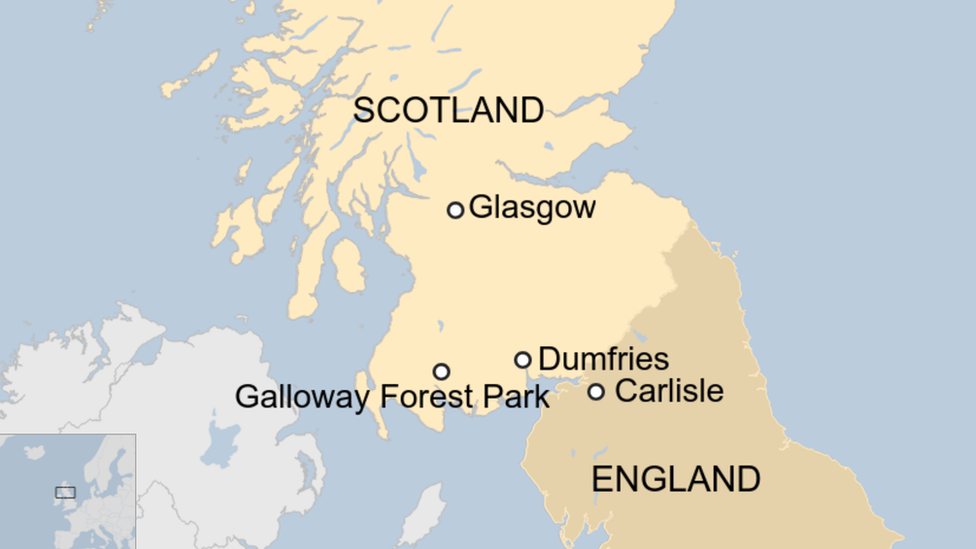
VisitScotland's Paula Ward said Scotland's reputation as a world class dark skies destination had "grown considerably" since 2009.
There are now four recognised dark sky sites across the country including the Galloway Forest Park, Dark Sky Town Moffat, the Cairngorms Dark Sky Park and the Dark Sky Island of Coll.
"Dark sky tourism and astro tourism are now firmly embedded within several regions of Scotland attracting visitors out of season, boosting visitor income and occupancy rates for accommodation providers," she said.
Ms Ward said it was estimated the park generated about £500,000 a year from tourism.
She added that there was a "real opportunity" to capitalise on such trends and attract more visitors across the country.
Magic moments

An observatory opened on the edge of the forest park in late 2012
An observatory opened near Dalmellington in late 2012 while plans are now in place for a visitor centre in Kirkcudbright to capitalise on Galloway's astronomical advantages.
Just a year after the park secured its status, visitors were able to enjoy special views of Gemenid meteors overhead.
In 2013, it was the turn of the Perseids meteor shower with "fantastic views" reported over the park.
A few years later, a surge of visitors watched as Mars came its closest to the earth in a decade.
"Astronomical highlights in the last 10 years include crisp, clear skies, annual meteor showers, eclipses and, of course, the Aurora Borealis, all of which have been viewed and enjoyed by visitors to the Dark Sky Observatory and Dark Sky Park," said observatory manager Fi McClelland.
"Dark sky tourism has been of tremendous benefit to many businesses in the local area, particularly accommodation providers - many of whom report being as busy in winter as they are in summer."
What difference does it make?
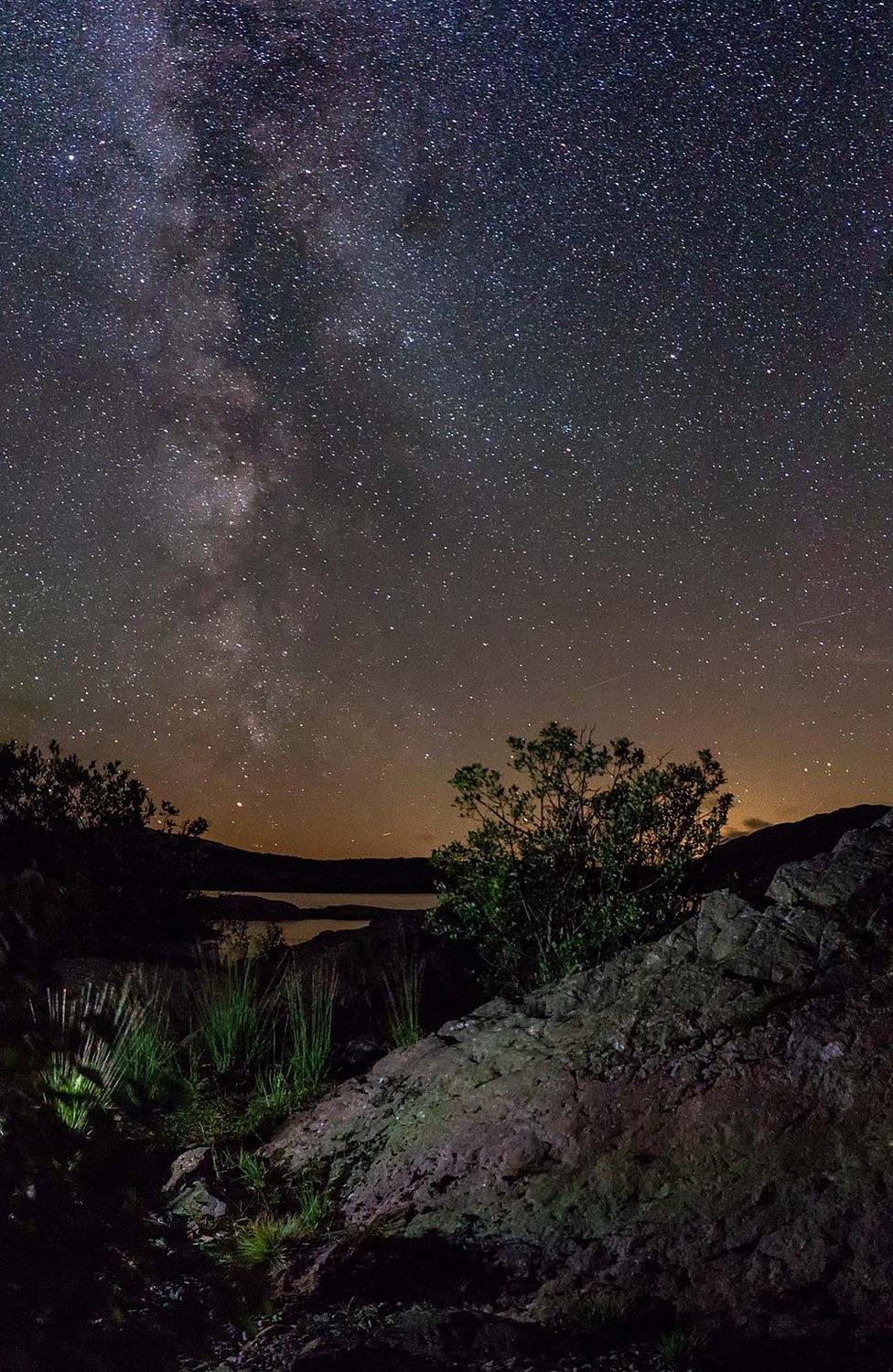

Keith Muir, of Forestry and Land Scotland, was instrumental in establishing the Dark Sky Park a decade ago.
He said the benefits stretched beyond the purely financial with greater awareness of light pollution issues across southern Scotland and beyond.
"On a global perspective, Galloway changed forever how dark sky places would evolve," he said.
"In 2009 we became the fifth in the world but the first to use tourism and advocacy to lead, educate and change people's thoughts on light pollution."
Mr Muir said all dark sky places had, at their heart, the objective to eliminate light pollution.
"Seeing the night sky is the icing on the cake - but Galloway made the icing before the cake," he explained.
He said that with more than a million visitors a year they had a "willing audience" to learn about the issues surrounding dark skies which he hoped would continue.
However, he accepted more might have been made of the dark sky status "on the ground".
Mr Muir said that the lack of a "tangible facility" inside the park - both the observatory and planned visitor centre sit on its edge - meant they risked falling behind other dark sky sites.
What is it like?
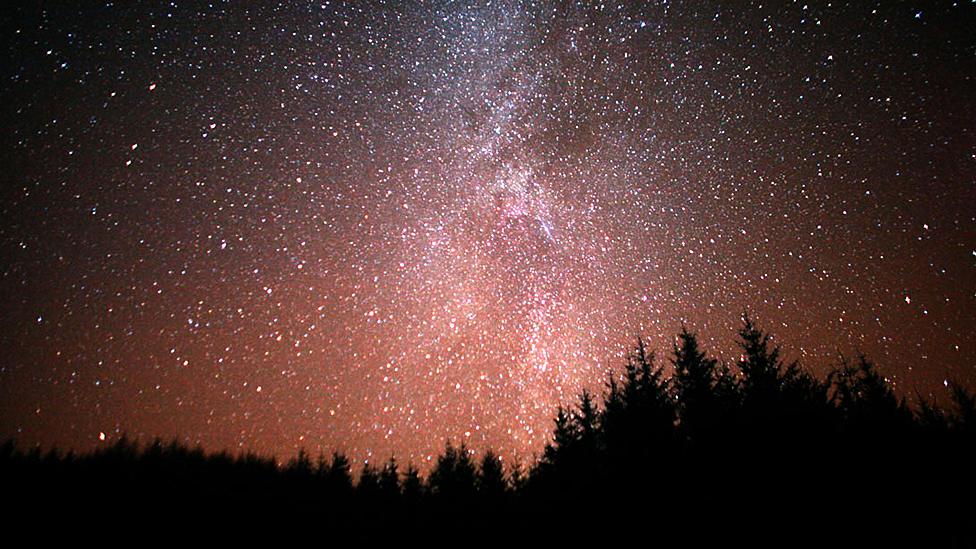
"A visit by anyone to the dark park in the dark gives people an experience of true darkness - something that the majority of people in modern times actually never experience," said Mr Muir.
"We are in effect in our eighth generation of living under perpetual light."
He said when the skies were good you could see many constellations clearly strung across the sky.
"Visiting a Dark Sky Park can get into your soul by allowing you to experience darkness and a solitude and quiet that few places can offer," he said.
"It also allows you to begin to understand our place in the universe when you realise how small our planet earth really is and how vulnerable it is.
"A visit raises curiosity and understanding - but also lots and lots of questions."
- Published5 September 2019
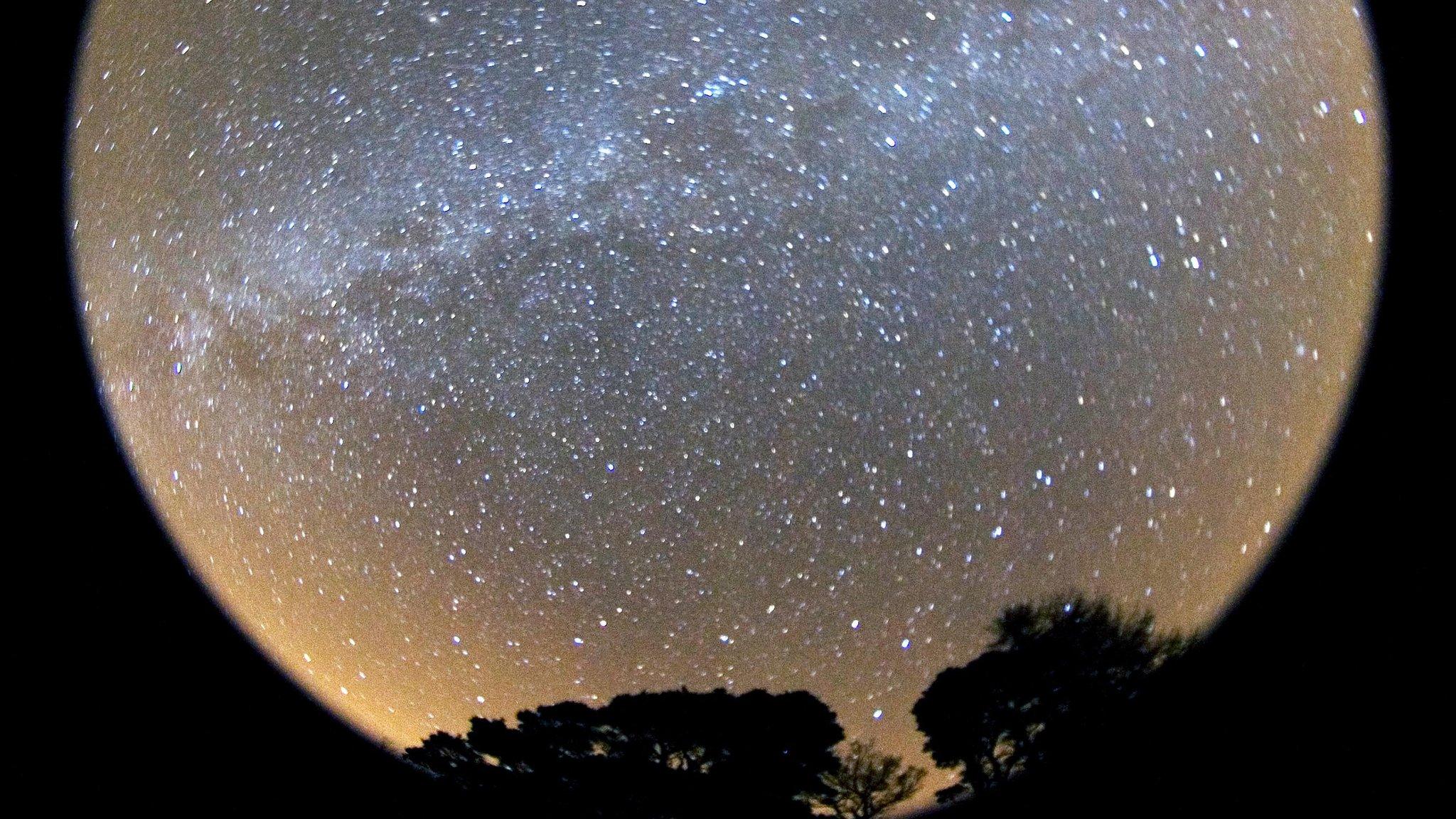
- Published21 September 2017
